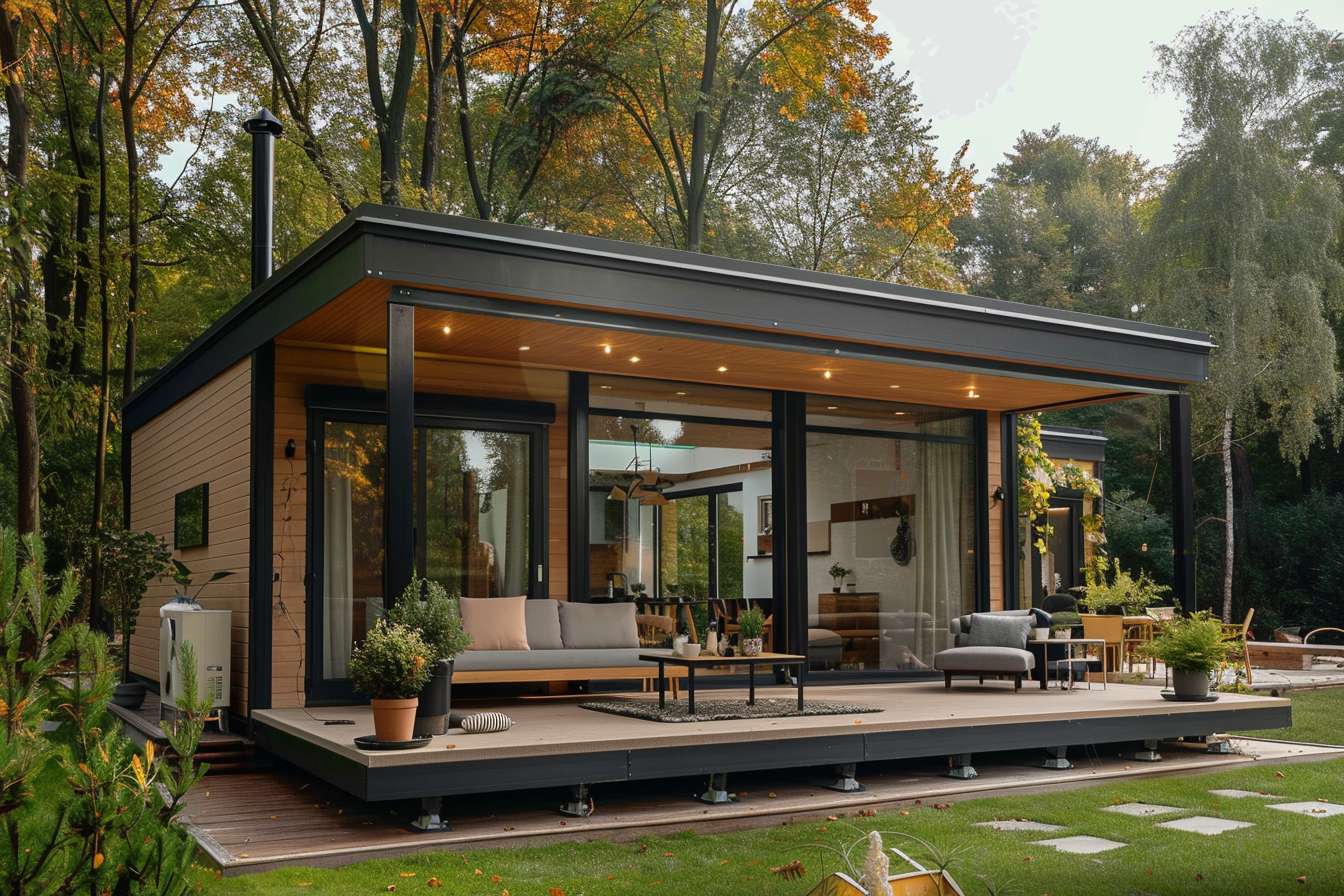Harmonious Home Habitats: Embracing Biocentric Design
In a world where urban living often disconnects us from nature, a revolutionary approach to interior design is taking root. Biocentric design, a philosophy that places living organisms at the center of our home ecosystems, is transforming how we conceptualize and create our living spaces. This innovative trend goes beyond mere aesthetics, fostering a symbiotic relationship between humans, flora, and fauna within the confines of our homes. Let's explore how this groundbreaking concept is reshaping our domestic environments and nurturing our innate connection to the natural world.

The origins of this movement can be traced back to the 1970s when scientists began to study the psychological benefits of human-nature interactions. However, it wasn’t until the early 2000s that architects and designers started to seriously incorporate these principles into residential spaces. The result is a harmonious blend of architecture, biology, and psychology that aims to enhance both human wellbeing and environmental sustainability.
Creating Living Walls: More Than Just Vertical Gardens
One of the most striking features of biocentric design is the implementation of living walls. These are not just decorative vertical gardens but complex ecosystems that can span entire walls of a home. These living tapestries serve multiple purposes: they purify the air, regulate humidity, and create a dynamic, ever-changing visual element in the space.
Modern living walls incorporate a diverse range of plant species, from ferns and mosses to flowering plants and even small shrubs. Advanced hydroponic systems and smart sensors ensure these walls receive optimal care with minimal human intervention. Some cutting-edge designs even integrate small animal habitats, allowing residents to coexist with birds, butterflies, or small reptiles in a controlled indoor environment.
Aquaponics: The Underwater Dimension of Biocentric Homes
Taking the concept of indoor ecosystems a step further, biocentric design often incorporates aquaponics systems into living spaces. These self-sustaining mini-ecosystems combine aquaculture (raising aquatic animals) with hydroponics (cultivating plants in water). In a biocentric home, an aquaponics setup might take the form of a striking room divider or a living kitchen island.
These systems not only provide a fascinating visual element but also offer practical benefits. The fish waste fertilizes the plants, while the plants clean the water for the fish, creating a closed-loop system. Homeowners can grow herbs, leafy greens, and even small vegetables while enjoying the calming presence of aquatic life. This integration of food production into living spaces represents a significant shift in how we think about home design and sustainability.
Biomimetic Materials: Nature-Inspired Innovations
Biocentric design extends beyond living organisms to include materials and structures inspired by nature. Biomimetic materials, which mimic natural processes and structures, are becoming increasingly popular in this design approach. For instance, self-cleaning surfaces inspired by lotus leaves, or textiles that regulate temperature like pine cones, are finding their way into biocentric homes.
These materials not only enhance the aesthetic connection to nature but also improve the functionality and sustainability of living spaces. Flooring that mimics the resilience of tree bark, or wall coverings that absorb and neutralize pollutants like certain types of moss, exemplify how biomimicry is revolutionizing interior design. The result is a home that not only looks natural but also behaves like a living, adaptive organism.
Circadian Lighting: Syncing With Nature’s Rhythms
A key aspect of biocentric design is the integration of natural light patterns into the home environment. Circadian lighting systems, which mimic the changing color and intensity of natural daylight, are becoming a staple in these nature-centric spaces. These smart lighting solutions adjust throughout the day, promoting better sleep patterns and overall well-being.
In a biocentric home, lighting goes beyond mere illumination. It becomes a tool for maintaining our connection with the natural world, even in urban environments where access to outdoor light may be limited. From subtle shifts in color temperature to gradual changes in intensity, these lighting systems help maintain our body’s natural circadian rhythms, potentially improving sleep quality, mood, and cognitive function.
The Psychological Impact: Nature-Induced Wellbeing
Perhaps the most profound aspect of biocentric design is its potential to enhance psychological wellbeing. Studies have shown that exposure to nature, even in simulated or indoor environments, can reduce stress, improve cognitive function, and boost overall mood. By bringing elements of the natural world into our daily living spaces, biocentric design creates an environment that continually nurtures our mental health.
The constant presence of living organisms, natural materials, and nature-inspired elements in a biocentric home provides a sense of connection and grounding. This is particularly valuable in urban settings where access to natural environments is limited. The result is a living space that not only serves as a shelter but actively contributes to the occupants’ mental and emotional wellbeing.
Challenges and Future Directions
While biocentric design offers numerous benefits, it also presents unique challenges. Maintaining complex ecosystems within a home requires careful planning, specialized knowledge, and ongoing care. There’s also the question of balancing the needs of living organisms with human comfort and practicality. As this design philosophy evolves, we can expect to see more integrated solutions that simplify the maintenance of these living spaces.
Looking ahead, the future of biocentric design is exciting. Advancements in biotechnology and materials science are opening up new possibilities for creating truly symbiotic living environments. From walls that can adapt to environmental conditions to furniture that grows and changes over time, the line between the built environment and the natural world is becoming increasingly blurred.
In conclusion, biocentric design represents a paradigm shift in how we conceive our living spaces. By placing living systems at the core of home design, we’re not just creating aesthetically pleasing environments, but nurturing spaces that actively contribute to our wellbeing and the health of our planet. As we continue to grapple with environmental challenges and the pressures of modern life, biocentric homes offer a promising path towards a more harmonious coexistence with nature.





